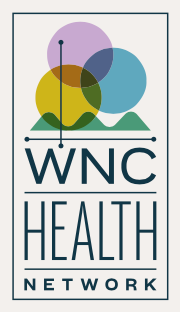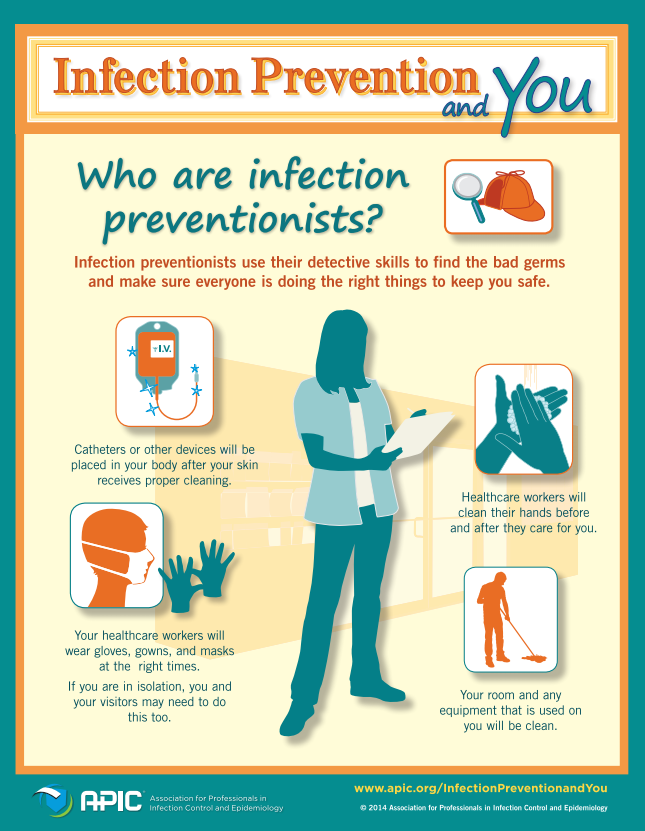Welcome to our newsletter!
|
|
|
Thanks for taking the time to learn more about our organization and our work in the region to support people and organizations to improve community health. Do you have feedback or suggestions to share? Reach out!
In this Issue:
- You’re invited – Exploring WNC Health Data webinar
- Anti-Stigma Communications Campaign Pilot
- Trusted Voices Needed – Call For Stories in WNC
- National Council on Aging Visits WNC
- Communications Capacity Building Update- MiniShops
- Practicum Student Host Opportunity
- …and more!
|
|
 |
|
Please join us for a webinar where participants will have the opportunity to dive into the wealth of publicly available data resources provided by the WNC Health Network.
In this session, you will:
- Get a comprehensive introduction to WNC Health Network’s publicly accessible WNC data products
- Learn how to navigate the extensive 16 and 18-County WNC Data Workbook, which encompasses over 250 WNC indicators and measures.
- Explore data spanning demographics, morbidity, mortality, behavior, physical environment, and resources.
- Discover the versatility of this resource, as it includes both secondary and primary data, including valuable insights from the regional community health survey.
- Learn how to efficiently filter WNC data based on source, type, health issue, age group, time, and more, allowing you to customize your search to meet your specific needs.
- Find related data charts and maps that will enhance your understanding of the regional health landscape.
Don’t miss this opportunity to harness the power of data to make informed decisions and drive positive change in your community. We’ll conclude the session with a Q&A, so come prepared with your questions.
|
|
|
In 2021, WNC Health Network and dedicated community partners began the planning process for a regional substance use anti-stigma communications campaign. Nine months of listening sessions, advisory group meetings, strategic planning sessions, and product development resulted in a robust understanding of what regional stakeholders wanted from an anti-stigma focused communications campaign. The main takeaway = this work is important and needs to happen!
The next phase has STARTED! Thanks to generous funding from Dogwood Health Trust, 5 communities in WNC are piloting messages from the See Me WNC campaign. This campaign seeks to reduce stigma related to substance use by promoting stories of residents in WNC who have lived experience with addiction. Promoting successes, focusing on messages of hope and resilience, and connecting residents to essential resources are cornerstones for this campaign. In the long-term, we hope See Me WNC lays the groundwork for a regional re-understanding of substance use, decreasing and eliminating stigma so people can access the care and resources they need.
|
 |
 |
|
Pilot communities were chosen based on geographic location, population diversity, population size, and both rural to urban distinction. Pilot communities include: Buncombe County, Haywood County, Macon County, Madison County, and Transylvania County.
The See Me WNC pilot campaign will be live on Facebook & Instagram from October 16th to November 10th. After this period, the campaign will merge with the substance use track of the regional View From Here WNC campaign.
All partners working in the regional substance use ecosystem are invited to use See Me WNC campaign materials. Materials are available in the Substance Use tab of the View From Here WNC toolkit – please feel free to use your own branding. Below are some helpful links and tips to keep in mind when sharing these materials.
|
 |
|
|
Share your story
The View From Here WNC regional social media communications campaign focuses on connecting residents with essential resources related to Mental Health, Substance Use, Healthy Eating/Active Living, and COVID/ Flu vaccines. To date, this campaign has reached over 450,000 WNC residents with these important messages. Part of what makes this collaborative campaign so powerful is the local trusted messengers who have shared their stories of resilience with residents across the region.
Our region is full of inspiring people with powerful stories to share. Do you know anyone in your community who may be willing to share their experiences related to mental health, substance use, or healthy eating/active living? We would love to connect with them!
Use the nomination form below to submit the names of the trusted voices in your community. Do you have a story to tell related to one of the campaign topics? Feel free to nominate yourself!
|
|
|
Center Photo Left to Right: Rebecca Williams, UNETE; Erin Braasch, WNCHN; Norma Duran-Brown, UNETE; Jose Infanzon Chavez, UNETE; Heather Marriott, NCOA; Natalia Munoz Schneier, UNETE
|
|
National Council on Aging visits our region
WNC Health Network enjoyed hosting Heather Marriott, Program Specialist from the National Council on Aging (NCOA), here in western North Carolina. WNC Health Network received a generous grant from NCOA this spring to help promote COVID and flu vaccinations. The goal of the grant is to make it as easy as possible for older adults to get their shots and protect their health.
We visited two vaccine clinics:
Heather got a front row seat to the strong collaboration, thriving partnerships, and deep community connections we are known for in WNC. She shared, “Thank you so much for hosting me last week. I learned invaluable information talking with your partners and visiting your office and clinics.” A big thank you to UNETE and Jackson County Public Health for hosting us.
|
|
|
Want to host a team of 3 graduate public health students on a project you’re working on this spring?
This spring semester starting January 2024, groups of second-year UNC-UNCA Asheville MPH students will work together with a WNC organization or group to help solve a pressing public health issue facing WNC.
These projects differ from the culminating experience project in that they 1) require several students’ attention, 2) do not necessarily require a written summary. Students will have several hours of dedicated time each Thursday to work on their proposed solution, drawing on their public health training. This project consists of proposed solutions that organizations can take forward and implement within their work. The students will not be implementing the solution as we have found a semester is not enough time for proposals and implementations. If you have a project that could use the creativity, innovation, and unique skills our students have to offer, please fill out the form linked below by Wednesday, October 25th.
*** If you have questions or want to think through whether your project would be a good fit, contact the instructor for the semester Ellis Matheson at ellisvaughan.dnp.rn@gmail.com or by cell at 828-712-1328.
|
|
 |
|
Naloxone Survey
As part of the regional work in Behavioral Health and Substance Use Disorder, Dogwood Health Trust created a survey that focuses on the accessibility and availability of Naloxone in WNC. They are looking for input from community partners who are currently distributing or using Naloxone (or Narcan or other brands), the reversal agent for opioid overdose, in their work. If this describes your organization, we encourage you to take this important survey. Please share this survey with other organizations that fit this description as well. We are excited to develop a complete picture of Naloxone availability and accessibility in the region.
This survey is very brief and should only take a few minutes. The deadline to submit answers is October 20, 2023. If you have any questions about the survey please contact April Bragg at a.bragg@dht.org.
In Rural Mitchell County, Telehealth Thrives in One Town, Falters in Another
Even though remote health care has not been widely adopted in Mitchell County, there are signs of success in one clinic that prioritized connecting with the rural culture in this mountain region.
Read the article in Carolina Public Press here.
MountainWise Newsletter
Our partners at MountainWise work with the eight westernmost counties of North Carolina to provide opportunities for physical activity, access to local fresh fruits and vegetables, provide support for tobacco-free places and access to services for chronic-disease management. When environments encourage and are supportive of healthy choices, it becomes easier to make those choices. Learn more and subscribe to their monthly newsletter here.
Medicaid Expansion
Beginning Dec. 1, 2023, more than 600,000 people in North Carolina will be able to apply for health coverage through NC Medicaid. To ensure people know about the expanded eligibility for NC Medicaid, the North Carolina Department of Health and Human Services launched a new website with a toolkit of resources for organizations to spread the word to their communities.
Medicaid expansion will cover people ages 19 through 64 years with higher incomes, closing the coverage gap for North Carolinians. Medicaid pays for doctor visits, yearly check-ups, emergency care, mental health and more — at little or no cost to participants.
|
|
|
HOST AN INTERN
Student Actions with Farmworkers (SAF): Into the Fields Sponsor Application
Applications due November 17, 2023
SAF develops the leadership of college students from diverse backgrounds, giving them the opportunity to work directly with farmworkers in the Carolinas. Each year, SAF trains approximately 25 students on issues that farmworkers face, and places them to work full-time with migrant education programs, legal aid offices, rural health clinics, community-based organizations, and farmworker unions. Learn more.
|
|
|
UPCOMING EVENTS
Dogwood Health Trust Next-Level Funding Webinar Series
Toward Equity: Recognizing an Emerging Focus in Your Proposal
October 25, 2023 Noon-1pm (Free)
Want to learn how to take your organization’s fundraising to the next level to increase your grant support and diversify your revenue streams? Join in on Dogwood’s Next-Level Funding Webinar Series. The next session, “Toward Equity: Recognizing an Emerging Focus in Your Proposal,” will be held on October 25, 12 – 1 p.m. Register here.
|
|
|
HCA Drug Takeback: Crush the Crisis
Saturday, October 28, 2023
HCA is partnering with local law enforcement agencies and Partnership for Substance Free Youth to host Crush the Crisis prescription drug take back events at locations across WNC. Residents will be able to safely and anonymously drop off unused and expired medication for proper disposal any of the participating collection sites listed below.
Locations+Times:
|
|
|
Mission Hospital- 10 AM – 12 PM
1 Hospital Drive, Asheville
Asheville Outlet Mall- 10 AM – 2 PM
800 Brevard Road, Asheville
Buncombe County Sherrif Department- 10 AM – 2 PM
339 New Leicester Highway, Asheville
Mission Hospital McDowell- 10 AM- 12 PM
500 Rankin Drive, Marion
|
|
 |
|
Transylvania Regional Hospital- 10 AM – 2 PM
260 Hospital Drive, Brevard
Blue Ridge Regional Hospital- 10 AM – 12 PM
78 Broad Street, Spruce Pine
Angel Medical Center- 10 AM – 12 PM
129 One Center Court, Franklin
Highlands- Cashiers Hospital- 10 AM – 11 AM
190 Hospital Drive, Highlands
|
|
|
American Public Health Association (APHA) Annual Meeting & Expo
November 12-15, 2023 – Atlanta, GA
APHA’s 2023 Annual Meeting and Expo is the premier public health event where attendees engage with public health experts, collaborate with other advocates and grow professionally. This year’s theme is Creating the Healthiest Nation: Overcoming Social and Ethical Challenges. We must build public health capacity and address the social and ethical challenges that threaten the nation’s health. With a stronger public health infrastructure, we can expand essential prevention and health promotion efforts at the community, state, and federal levels to tackle threats from communicable diseases, substance misuse, climate change, and health disparities. Learn more.
|
|
|
North Carolina Institute of Medicine (NCIOM) Annual Meeting Promoting the Mental health and Well-being of Children and Youth in North Carolina: Solutions for a Brighter Future
November 14, 2023 – Raleigh, NC
Join colleagues and partners from across the state to network, reflect, and work toward health policy solutions in North Carolina. The 2023 North Carolina Institute of Medicine Annual Meeting, Promoting the Mental Health and Well-being of Children and Youth: Solutions for a Brighter Future, will highlight the factors that influence the health and well-being of our state’s children, from social drivers of health to protective supports at the family, individual, and community levels. The 2023 NCIOM Annual Meeting will provide an opportunity to examine the causes of rising prevalence of mental health and substance use issues and encourage innovation in how we care for children, youth, and families in our state. Learn more.
|
|
|
National Summit on the Social Determinants of Health: Making Permanent the Promise of Health Equity
December 3-5, 2023 – Kansas City, MO
The Root Cause Coalition’s Annual National Summit brings together key stakeholders from health systems, hospital associations, foundations, businesses, national and community nonprofits, health insurers, academic institutions, local government and policy centers convene to share best practices. To achieve health equity for all we believe we must work together, across sectors, to address systemic racism and the social determinants of health.
The 2023 National Summit will be held at the Loews Kansas City Hotel on December 3-5, 2023. Focusing on the theme, Working to Make Good on the Promise of Health Equity, the agenda will feature nationally recognized experts in health equity, plenary panels, breakout sessions, poster presentations and more. Learn more.
|
|
|
Z. Smith Reynolds Foundation Sabbatical Program
Applications due November 1, 2023
Nonprofit leaders in North Carolina work tirelessly to improve their communities and often face burnout. To continue their critical work, leaders need a chance to rest, restore their energy and find renewed inspiration. Our sabbatical program offers $40,000 to up to five nonprofit leaders for three- to six-month sabbaticals for the purpose of personal rejuvenation. Learn more.
|
|
|
The Community Foundation of WNC: Sudden and Urgent Needs (SUN)
Rolling
The Community Foundation offers SUN grants of up to $10,000 to assist human service nonprofit organizations experiencing an unforeseen crisis that diminishes their ability to provide critical services. Applications are received and considered on a rolling basis until funds allocated to the annual SUN program have been fully expended. Learn more.
|
|
|
National Center for Mobility Management: Ready-To-Launch Grants 2024
Applications due November 17, 2023
The goal of these grants is to enable multi-sector community teams to pilot promising mobility solutions, the development of which was inspired and informed by the results of community research. Ready-to-Launch Grants offer up to $75,000 in funding plus technical assistance for all grant activities.
Eligible applicants include nonprofit organizations and government agencies that are able to receive, or be a sub-recipient of, federal funding. Teams that have previously received a Ready-to-Launch grant are not eligible to apply. Learn more.
|
|
|
North Carolina Office of Rural Health: North Carolina Rural Health Centers Capital Grant
Applications due December 29, 2023
The North Carolina Rural Health Centers Capital Grant provides funding to support state-designated rural health centers with developing innovative strategies for improving access, quality, and cost-effectiveness of healthcare.
Funding may be used for investment in healthcare infrastructure, including the construction, renovation, and expansion of rural healthcare facilities and the purchase and installation of major equipment and technology. Learn more.
|
|
Follow us on Facebook & LinkedIn!
Our organization is committed to using our social media platforms to share information about people and organizations that work to improve community health and well-being across western North Carolina. Please make sure to like and follow us to stay in touch, share relevant information with your networks, and tag us in your own agency posts that you’d like for us to amplify. Click on the icons on the right to find us on social media.
|
|
|
|
|
|
|
|





















